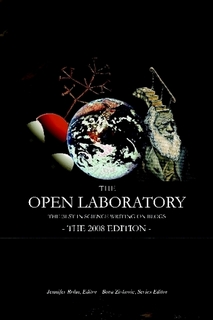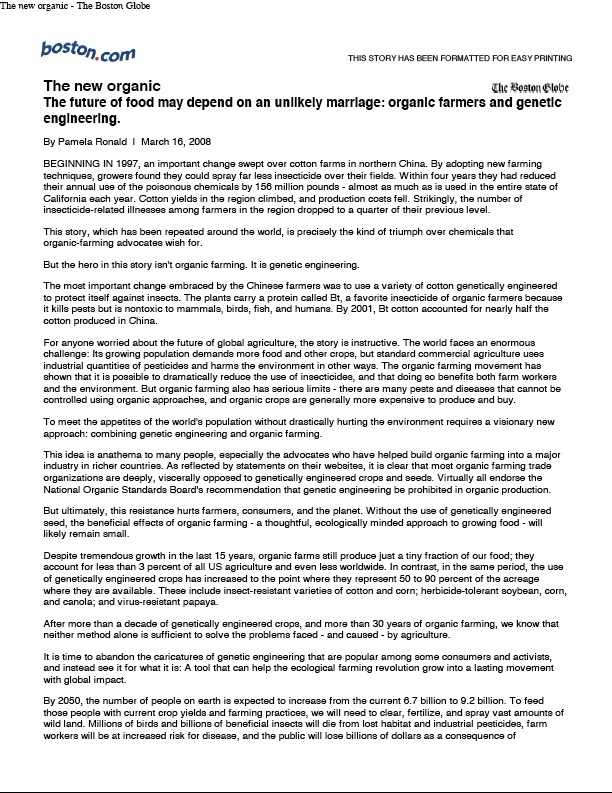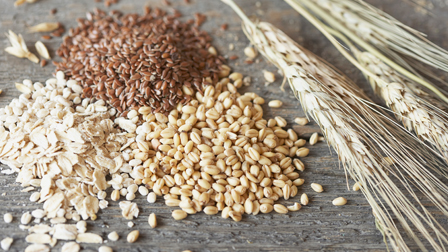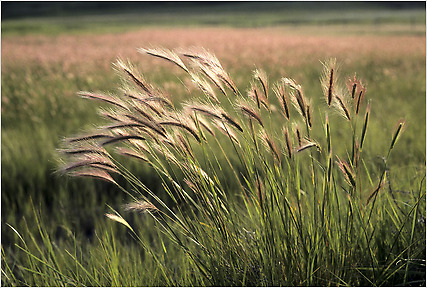Category: Art and science • food • garden • health • organic farming • recipes • sustainability • the scentific life
For the 2010 Pi day bakeoff, I baked a Swiss chard-Gruyere pie.
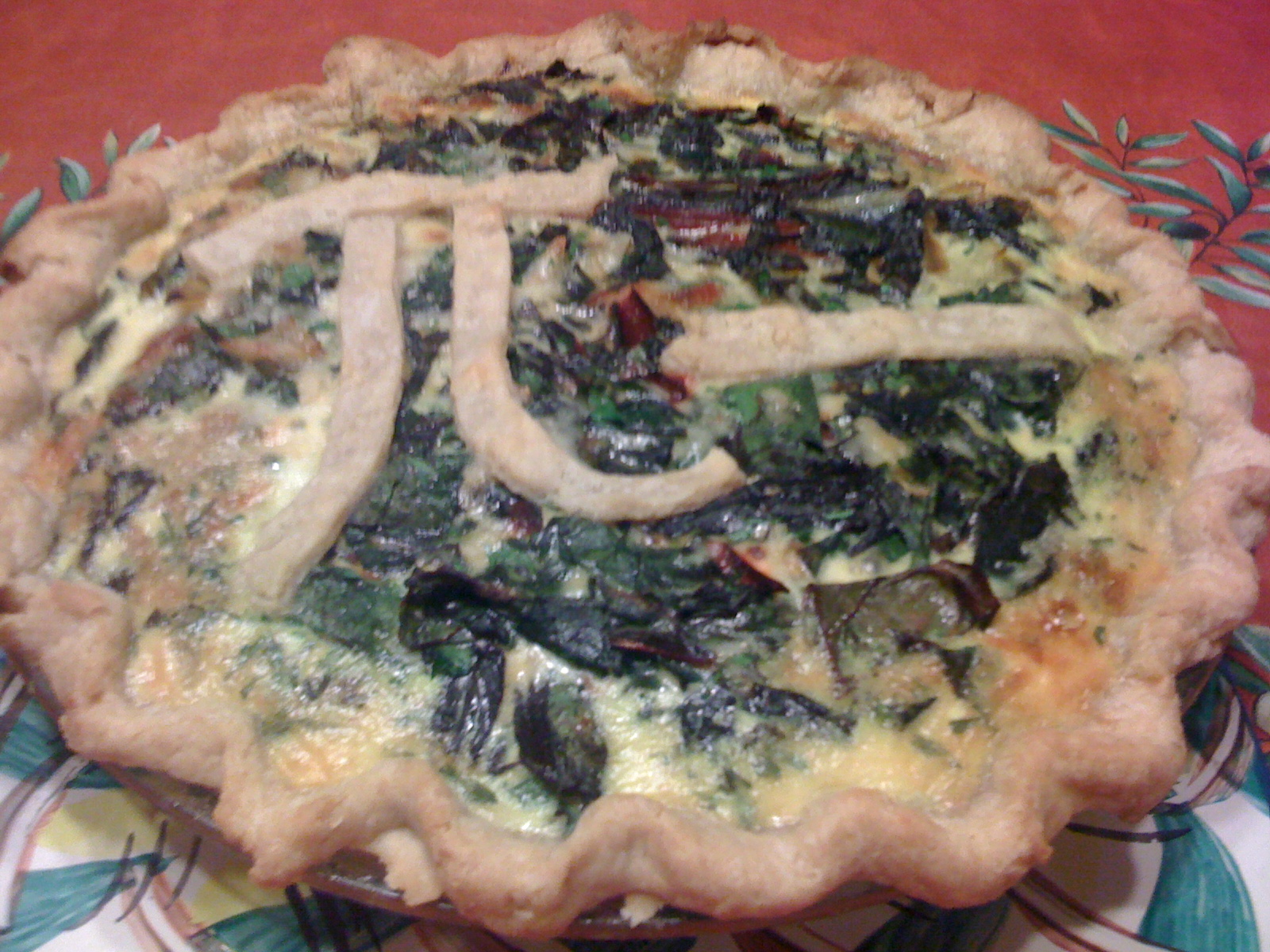

Shown here is the backdrop to our garden:a mural on the side of our barn, painted with California poppies, rice plants, sunflowers and (look closely) a red double helix. Artist: Jim McCall, Elastic Media.

Here is the recipe:
Read on »
Posted by Pamela Ronald at 6:30 PM • 0 Comments • 0 TrackBacks
Category: Bt • GMO • Genetically engineered crops • International Agricultural Development • genetics and society • health
Check out this great post by Mary M on biofortifed. In it she reviews a new research paper that describes how the use of Bt could potentially save the lives of millions.
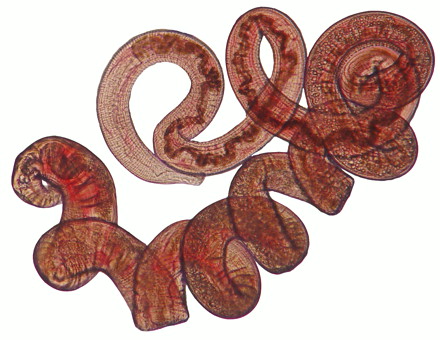
You can download a video about the researchers and their work here.
From Mary's post: "For some people, a great deal of the conflama around genetically-engineered (GE) crops has to do with the presence of a pesticide in the plant material--mainly the Bacillus thuringiensis or Bt protein--rather than coating the surface of the plant as organic Bt sprays or chemical-style pesticides would. No matter how many times I explain that there are benefits to this strategy (such as reduced impact on non-target species and on improvements in farm family health among others), it doesn't seem to help. No matter how many times I explain that pesticides aren't the only modification to plants (as we see at Biofortified regularly), it doesn't matter to critics of GE. The fact that plants make their own pesticides? Not interested. And no matter how many times I explain how the Bt proteins work only on species that have the specific receptor for that interaction--and therefore does not affect humans as it would the corn borer pest--it doesn't seem to have any impact. The misplaced fear continues to be used by the critics.ResearchBlogging.org
So when I saw this paper that suggested the Bt protein may be a powerful strategy for improving the lives of impoverished children around the world, all I could do was wonder if that might finally register with those who make unsupported claims of the effects of Bt on humans."

Read on »
Posted by Pamela Ronald at 7:24 PM • 5 Comments • 0 TrackBacks
Category: Art and science • Genetically engineered crops • fertility • gene flow • genetics and society • the scentific life
Science Magazine this week published the winners of this year's International Science and Engineering Visualization Challenge.
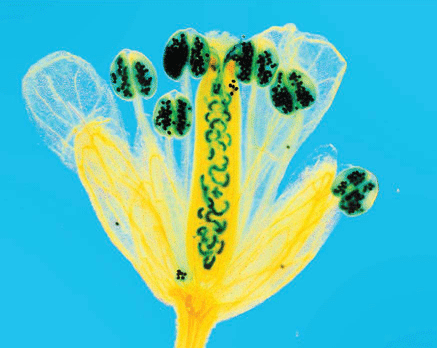
Self-Fertilization: Heiti Paves and Birger Ilau, Tallinn University of Technology
Within its tiny white flowers, thale cress (Arabidopsis thaliana) does what most plants avoid: It fertilizes itself. Heiti Paves of Tallinn University of Technology in Estonia took this photograph of the flower with its pollen grains and ovaries stained blue to show the process in action. From the six pollen heads, the grains grow thin tubes toward the bean-shaped ovaries in the flower's stigma to fertilize them. Because of the microscope technique used, polarized light turns the normally white flower yellow and the background blue. Scientists have used A. thaliana in many genetic studies because its self-fertilization makes experiments clearer. Gregor Mendel used a self-fertilizer, the pea, to build his genetic theories, Paves notes.
The editors suggest the following Related Resources on Science sites:
In Science Magazine
SPECIAL FEATURE
2009 Visualization Challenge
Jeff Nesbit and Monica Bradford (19 February 2010)
Science 327 (5968), 945. [DOI: 10.1126/science.327.5968.945]
Posted by Pamela Ronald at 5:29 PM • 0 Comments • 0 TrackBacks
Category: climate change • policy • scientific leadership • the scentific life
John Broder writes today in the New York Times that the uproar over the unauthorized release of hundreds of emails and recent revelations about a mistake in the IPCC report threatens to undermine decades of work and has badly damaged public trust in the scientific enterprise.
Broder's interviews with scientists reveal two thoughtful but seemingly opposing viewpoints:

Read on »
Posted by Pamela Ronald at 8:37 PM • 21 Comments • 0 TrackBacks
Category: GMO • Genetically engineered crops • Monsanto • agricultual policy • genetics and society • india • molecular breeding • plant breeding • policy

Eggplants are found in many colors: green, white, purple, yellow, even striped. They are shaped like cucumbers or apples. They are eaten in Italy as melanzane alla parmigiana, in France as ratatouille, and in the Middle East as baba ghanoush.
My husband Raoul usually grows Imperial Black Beauty, Rosa Bianca, and the hybrids Beatrice and Nadia. We cook them shortly after harvest:
Spicy Eggplant
2 Eggplants, diced into 1/2" cubes
3 tbsp Olive oil
1 Clove of garlic, smashed and chopped
1/2 tsp Chile flakes
1. Sauté smashed and chopped clove of garlic in the olive oil.
2. Add the chile flakes to the pan.
3. Add the eggplant to the pan, and sauté until the eggplant is very soft and
tender.
4. Add salt to taste.
Most of us love eggplant, but to find a true eggplant connoisseur, go to India.
In India, this fruit, closely related to tomato, is known as the "King of the vegetables". For Indians, eggplant (called Brinjal) is second only to potato in importance in the diet. It can be cooked with tomato, and seasoned with cumin, turmeric garlic and ginger (Bhurtha) or with cauliflower and potatoes in a spicy sauce (Aloo Gobhi Masala) or hundreds of other ways.
And Indians don't only eat eggplant, they grow it. A lot of it. Indians are second only to China in the amount of eggplant produced.
No wonder then, when the Genetic Engineering Approval Committee (GEAC), gave its go-ahead to the commercial cultivation of genetically engineered brinjal in October 2009, that the public took interest. After all, what would it mean for food and farming in India?
GE Brinjal is a transgenic eggplant that expresses gene from the soil bacterium Bacillus thuringiensis. This variety was designed to give the plant resistance against insects like the Brinjal Fruit and Shoot Borer (Leucinodes orbonalis). It was developed by Indian scientists at the Maharashtra Hybrid Seed Company (MAHYCO).

The Fruit and shoot borer larvae feed inside the shoots and fruits, retarding the vegetative growth. In high pest pressure years, over 90% of the fruits can be infected, and yield reductions up to 60% have been reported.
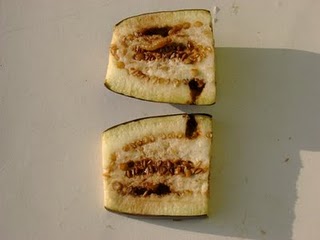
Moderately infected fruits are often still marketed but are associated with significant price discounts.
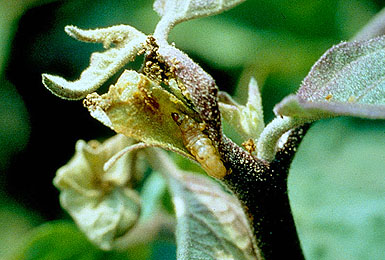
Pesticides to control this insect account for a significant share of the total amounts of pesitcides used in India. At least two of the insecticides used on eggplant in India are legally banned in many other countries. Twenty-five percent of eggplant farmers have suffered personally from acute pesticide poisonings. This number does not include poisonings that affect hired farm laborers.
In Mahyco sponsored trials of eight Bt eggplant hybrids, a 42% reduction in pesticide usage was observed. Field experiments on these hybrids were also carried out by the Indian Council of Agricultural Research, as part of the regulatory evaluation process (as far as I can tell, though, these results have not yet been published). These studies suggest that Bt eggplant would significantly reduce insecticide applications, increase effective yields and likely to bring about significant benefits for farmers' healths. Less spraying means fewer poisonings
Who benefits besides farmworkers? Simulations show that the aggregate economic surplus gains of Bt hybrids could be around US$108 million per year. Consumers and Mayhco will also capture a large share of these gains.
After vociferous public protests, the Indian Environment Minister, Jairam Ramesh, imposed a moratorium on the cultivation of Bt Brinjal. Ramesh stated that the moratorium will last "for as long as it is needed to establish public trust and confidence".
With such dramatic reductions in the use of insecticides and predicted clear benefits for farmers, consumers and the environment, why is there so much opposition?
For one thing, Mahyco is partly owned by the US multinational Monsanto. As far as I can tell from comments on my blog, noone seems to like multinational corporations unless they are run by Bill Gates or Steve Jobs.
Secondly there is concern that the diversity of eggplant will be reduced if most farmers plant the BT-Brinjal. This is a valid concern. After all, there are currently as many as 2,500 varieties of brinjals cultivated in India. The National Gene Bank in New Dehli has accessions for nearly 3,550. If the Bt Brinjal reduces costs and pesticide poisonings, most higher income farmers that can afford the hybrids will almost certainly adopt the new seed.
To address this concern, there is an interesting public-private partnership in the making that will allow for development of low cost open-pollinated varieties. This would make the GE eggplant more accessible to resource-poor farmers, who are less likely to buy the hybrids.
Thirdly some consumers worry that BT eggplant is not safe to eat despite the fact there has not been a single case of harm to humans or the environment from GE crops in over 10 years of cultivation.
As Sid notes on his blog, food safety may not be the main issue.
"In my opinion the opposition to Bt-Brinjal has much more to do with ideology, and has very little to do with public safety. In general food safety in India is very poor. Every year in India some 400,000 children below the age of five die from diarrhea caused by contaminated food and water. It is surreal to see activists raise worries about the remote possibility of someone in the distant future getting allergies and rashes from eating Bt-Brinjal, while being totally unconcerned about thousands of people dying every day from ordinary food and water contamination".
Former World Food Prize winner M.S. Swaminathan who has often advocated the use of biotechnology to address food shortages in the coming decades has said in an interview that the Indian government should use the extra time given by the moratorium to put in place a credible, effective, and transparent regulatory system for the benefit of India, and to conduct tests in a manner that earns the public trust.
This is a recipe we certainly need,
Posted by Pamela Ronald at 5:14 PM • 43 Comments • 0 TrackBacks
Category: fertility
When I give lectures about the global food supply and the environment, often someone in the audience will comment that the best way to solve the problem is to quit producing so much food.
I find this type of "Let 'em starve" approach quite horrific from a humanitarian view. It also makes no sense scientifically.
Read on »
Posted by Pamela Ronald at 7:32 PM • 42 Comments • 0 TrackBacks
Category: agricultual policy • climate change
I hear it is snowing in 49 out of 50 states today. And this, just after the big snow in Washington. Is climate change to blame?
Read on »
Posted by Pamela Ronald at 8:39 PM • 112 Comments • 0 TrackBacks

 Pamela Ronald is Professor of Plant Pathology at the
Pamela Ronald is Professor of Plant Pathology at the 
